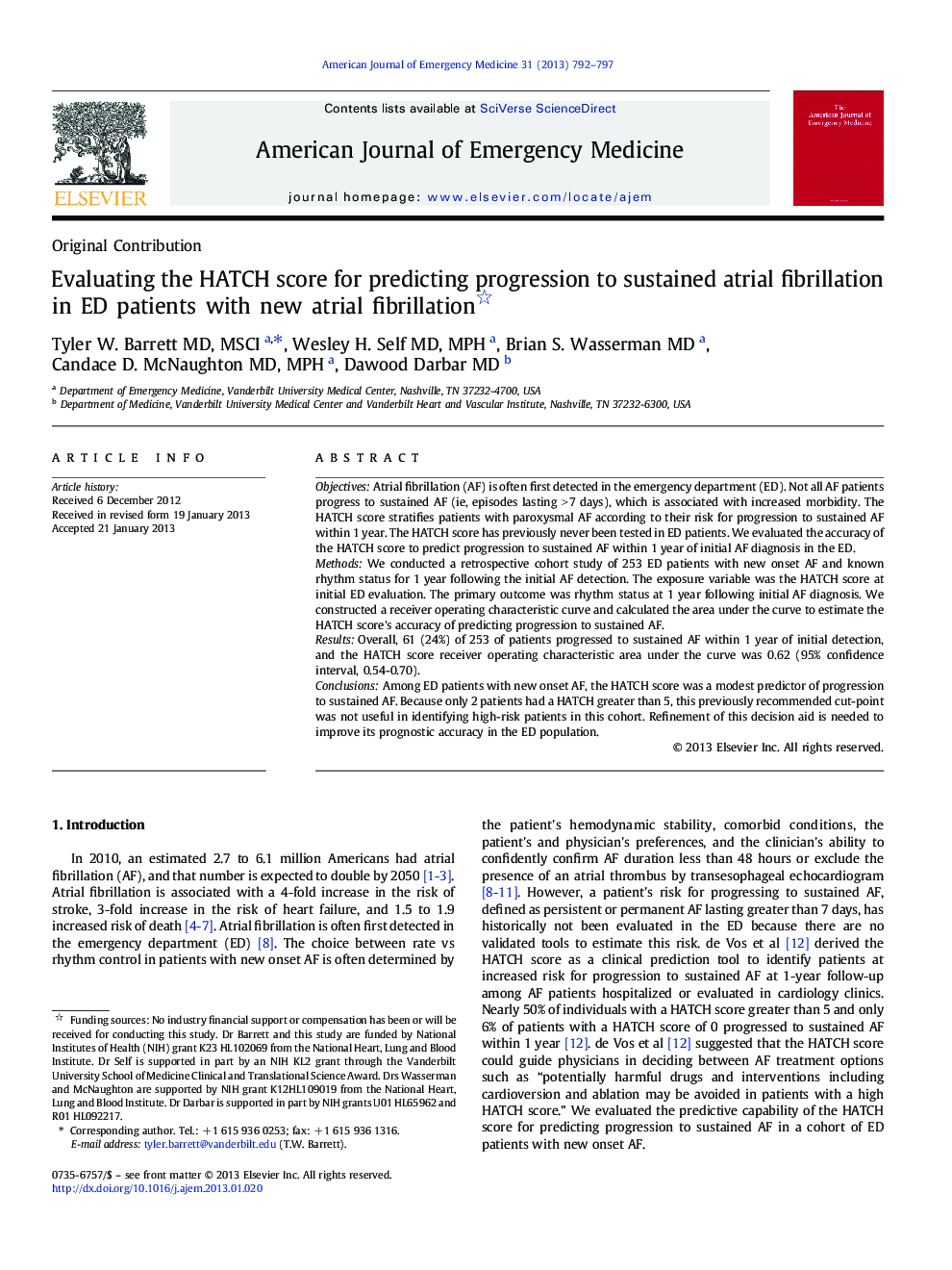| Article ID | Journal | Published Year | Pages | File Type |
|---|---|---|---|---|
| 3225168 | The American Journal of Emergency Medicine | 2013 | 6 Pages |
ObjectivesAtrial fibrillation (AF) is often first detected in the emergency department (ED). Not all AF patients progress to sustained AF (ie, episodes lasting > 7 days), which is associated with increased morbidity. The HATCH score stratifies patients with paroxysmal AF according to their risk for progression to sustained AF within 1 year. The HATCH score has previously never been tested in ED patients. We evaluated the accuracy of the HATCH score to predict progression to sustained AF within 1 year of initial AF diagnosis in the ED.MethodsWe conducted a retrospective cohort study of 253 ED patients with new onset AF and known rhythm status for 1 year following the initial AF detection. The exposure variable was the HATCH score at initial ED evaluation. The primary outcome was rhythm status at 1 year following initial AF diagnosis. We constructed a receiver operating characteristic curve and calculated the area under the curve to estimate the HATCH score's accuracy of predicting progression to sustained AF.ResultsOverall, 61 (24%) of 253 of patients progressed to sustained AF within 1 year of initial detection, and the HATCH score receiver operating characteristic area under the curve was 0.62 (95% confidence interval, 0.54-0.70).ConclusionsAmong ED patients with new onset AF, the HATCH score was a modest predictor of progression to sustained AF. Because only 2 patients had a HATCH greater than 5, this previously recommended cut-point was not useful in identifying high-risk patients in this cohort. Refinement of this decision aid is needed to improve its prognostic accuracy in the ED population.
